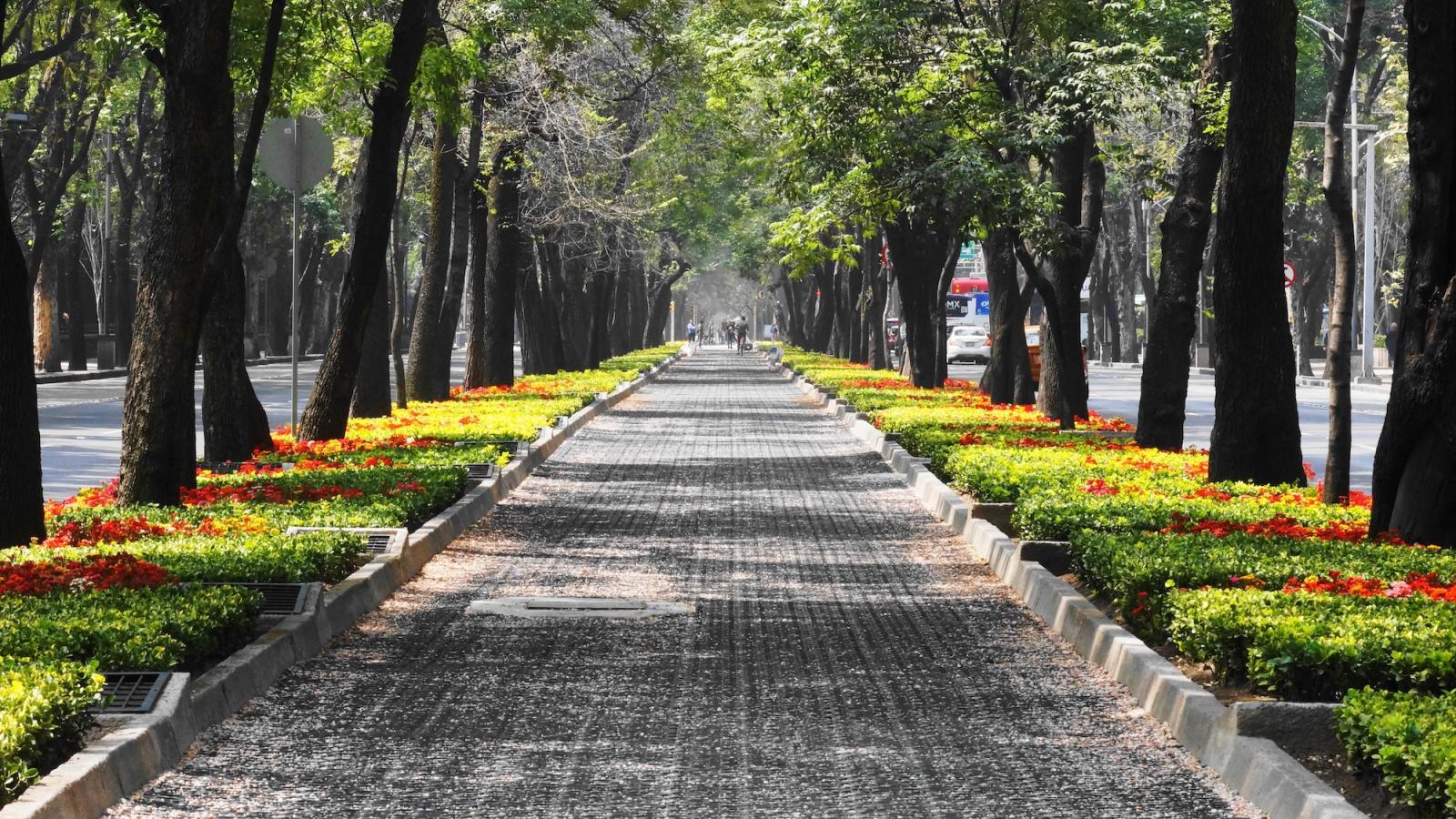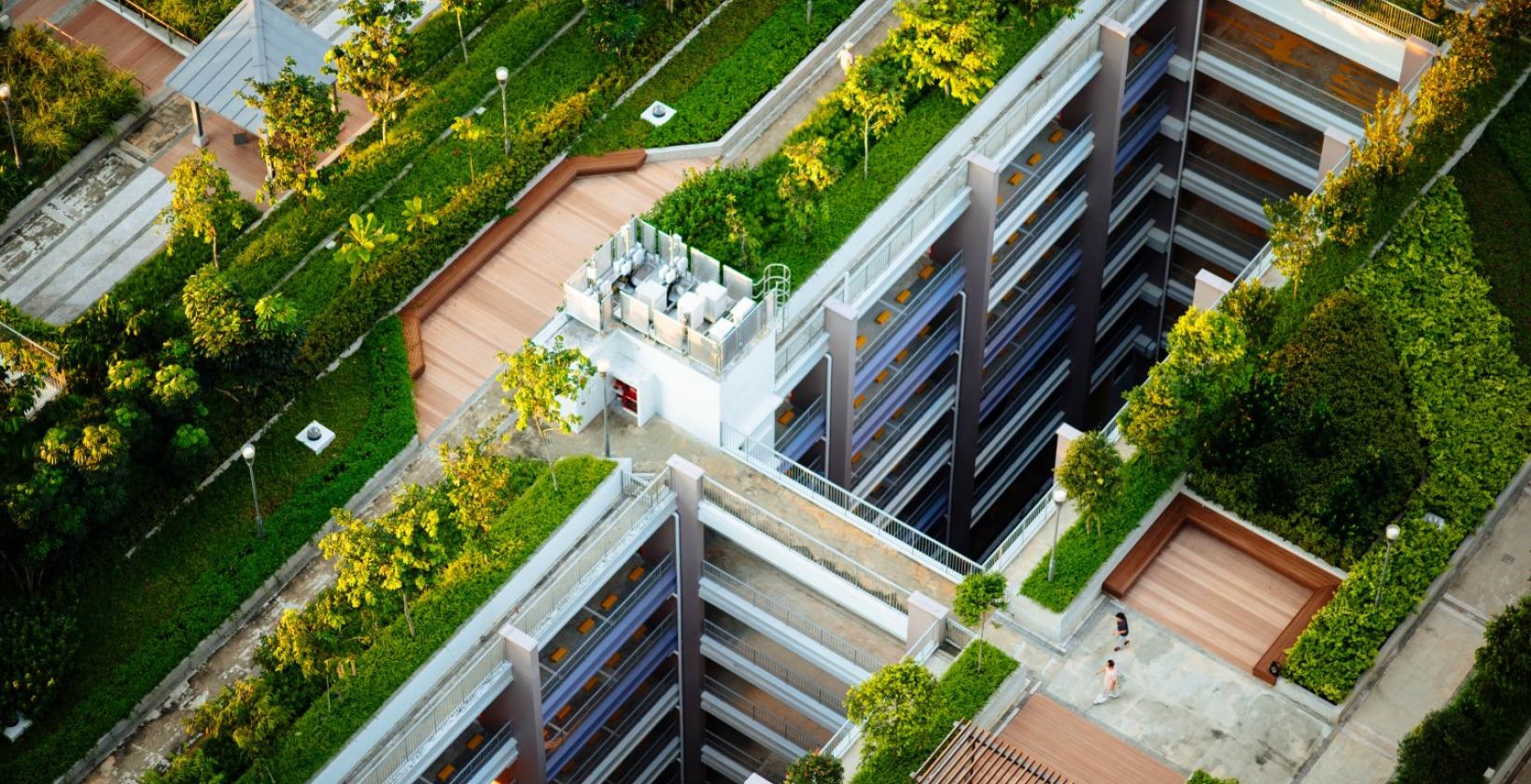How Urban Forestry is Transforming Cities
From Brazil to Sierra Leone, cities are putting nature in the driving seat.
Enrique Amaya/Unsplash
This post originally appeared on Think Landscape, a publication of the Global Landscapes Forum, by Augusta Dwyer.
In São Jose dos Campos, a city of 700,000 in the state of São Paulo in southeastern Brazil, the trees send residents a message.
“I am your tree. Look after me well,” reads a plaque above an informational QR code.
The plaques are just one of the many public policy measures the municipality has taken to improve the urban environment.
In recent years, the city has also introduced electric-powered public transport, installed a satellite monitoring system to prevent illicit land use change, and even rewritten building codes to compel developers to obtain green certification, install permeable surfaces, plant trees in nearby public spaces and contribute to the local community.
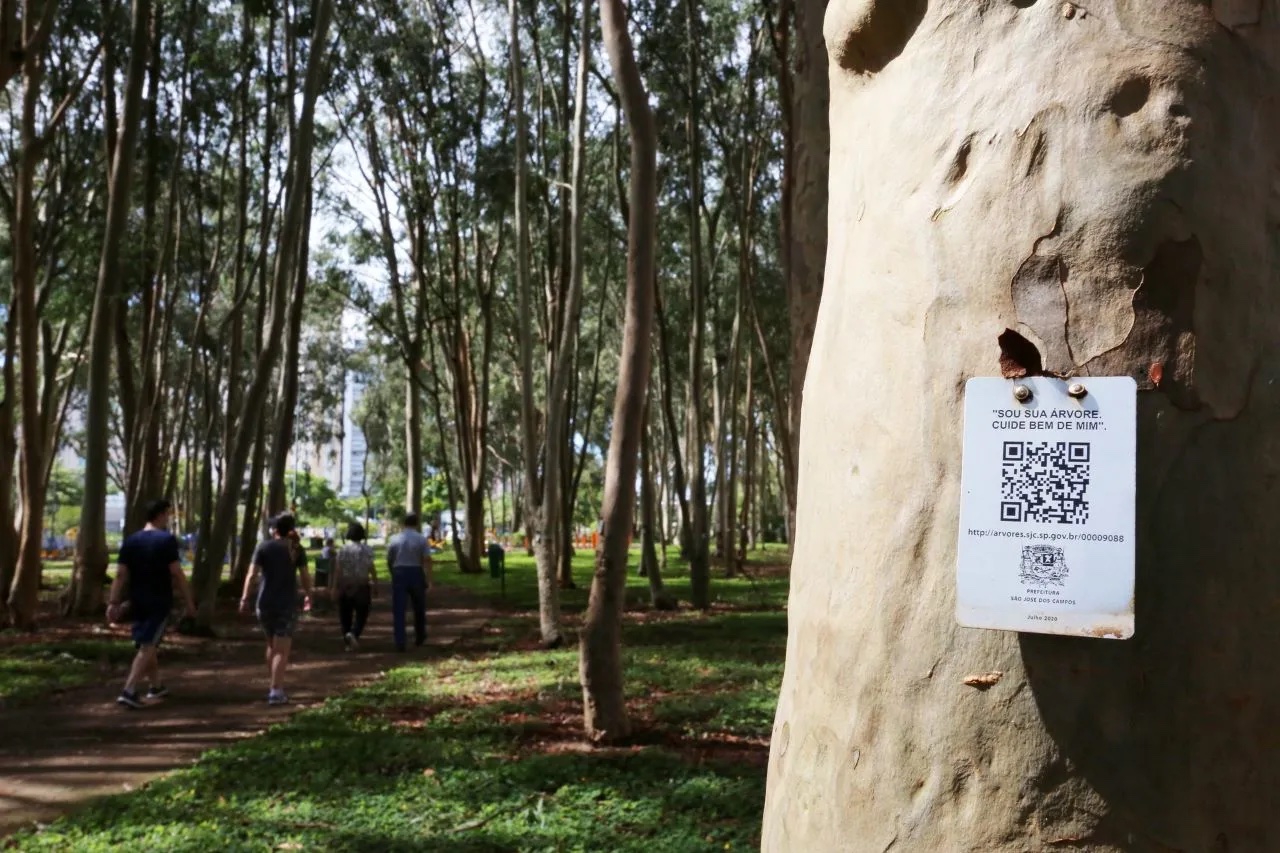
In São Jose dos Campos, trees have been fitted with plaques reminding local residents to take care of them. Adenir Britto/PMSJC, Flickr
São Jose’s residents are the main driving force behind these advances, says Marcelo Manara, the municipal secretary of urbanism and sustainability. “Joseenses are very engaged with these environmental concerns. It’s a population that demands this kind of caution and care for the environment from its governors.”
Recognized as one of 170 Tree Cities of the World by the Food and Agriculture Organization (FAO), São Jose set an ambitious urban forestry goal in 2018: adding 56,000 new trees to its existing inventory of 80,000 by 2029. About 10 percent of these were to be planted in spots that residents have earmarked on a public database.
And on the nearby Serra da Mantiqueira, a mountain that supplies water not only to São Jose dos Campos but several other cities including São Paulo, more conservation measures have been put in place.
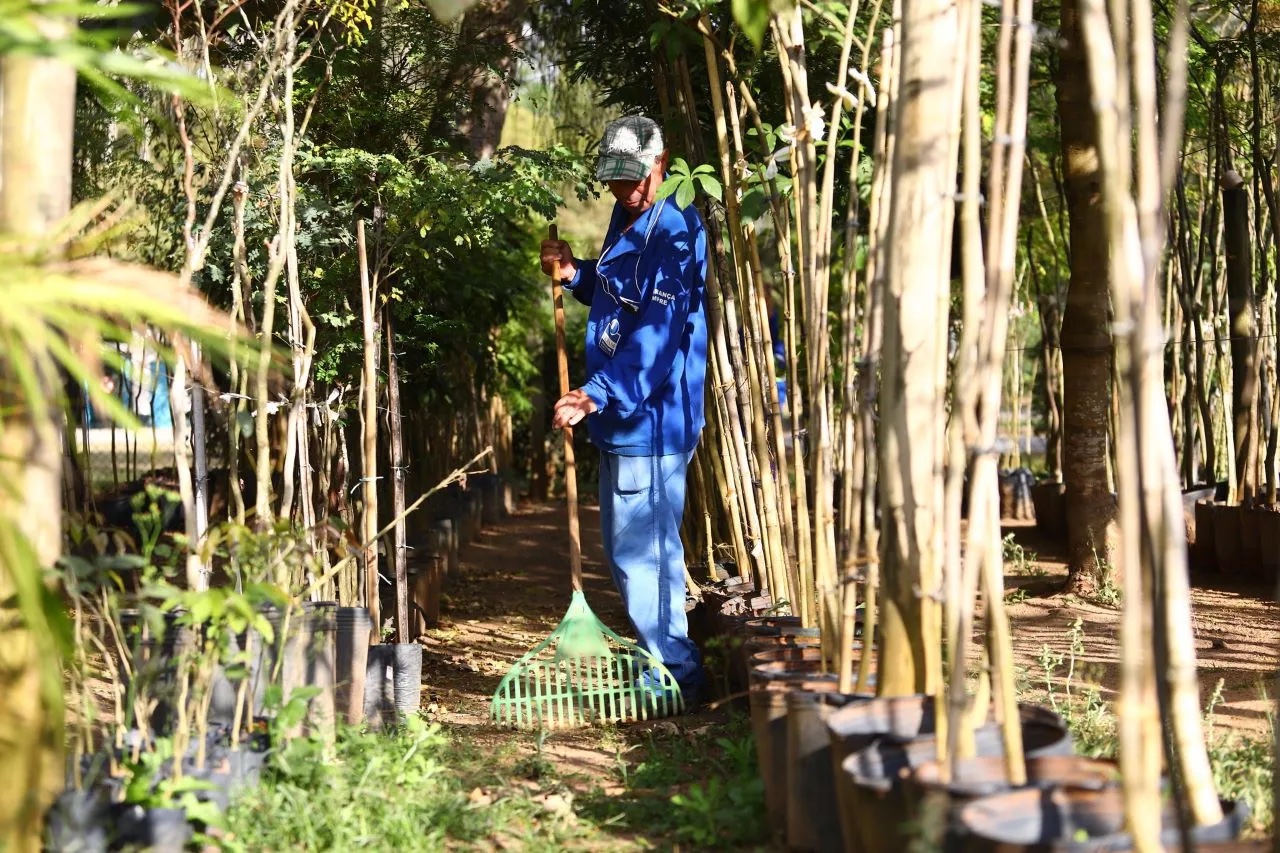
São Jose dos Campos is recognized as one of the 170 Tree Cities of the World. Claudio Vieira/PMSJC, Flickr
Are cities the next climate battleground?
The Tree Cities of the World – “a recognition scheme, not a certification scheme,” says FAO forestry officer Simone Borelli – and the World Resources Institute’s Cities4Forests network are just two examples of initiatives encouraging and helping urban leaders across the globe to embrace sustainability.
Cities are responsible for an estimated 70 percent of global greenhouse gas emissions – and they’re also suffering the brunt of the effects.
“When it hits in cities, it really matters,” says John-Rob Pool, manager of the Urban Shift program. The past few years have seen many urban areas forced to deal with flooding, hurricanes, air pollution from wildfires, and extreme heat, costing not only billions of dollars in damage but also human lives.
“At the end of the day, the battle of climate change is going to be lost or won in cities,” Pool adds. “It’s where we consume the most, where the most people live, and where there’s the most financial interest.”
As a result, Pool adds, “cities are becoming more active and more empowered – especially in global policy arenas.”
At the recent COP28 climate conference in Dubai, a local government climate action summit was held for the first time ever at a UN climate conference.
This summit, he says, was designed “for city leaders and subnational governments to come together and talk about their challenges on reaching targets associated with climate change mitigation as well as opportunities to get there.”
A similar session focusing on cities also featured on the agenda at last December’s COP15 biodiversity conference.
“Momentum is definitely growing,” says Pool. “There’s always further to go, but it’s definitely at an all-time high.”

The magic of urban forestry
Countless studies have spelled out the benefits of urban forestry and other nature-based solutions.
For example, the presence of shade trees can lower temperatures by up to 8 degrees Celsius and reduce air conditioning needs by 30 percent. They also cool the air by absorbing water and releasing it through evapotranspiration, countering the heat island effect caused by the cement and asphalt that cover most metropolitan areas.
Urban forests also improve biodiversity and provide habitat for birds and animals. A 2019 study in Denmark even showed that a childhood spent close to green space can improve mental health later in life.
Aside from those considerations, however, says Borelli, “it’s about the economy. A green city is more attractive for tourism, to investment.”
For instance, in the Spanish city of Salamanca, “their main concern is climate change. But also, for them, tourism is a big industry. They want people to come to a green city that’s cooler and more enjoyable.”
Traditional urban forestry has evolved beyond simply planting or conserving tree cover. Cities with rivers or canals can create floating wetland ecosystems, either along embankments or as islands, devised by Scotland-based Biomatrix Water Solutions.
Not only can these wetlands improve the quality of urban life by beautifying the environment and harboring wildlife, but their dangling roots also filter out pollutants such as nitrates and phosphates from the water, says project installer Josh Pridding. This natural filtration can reduce the cost of chemical treatment.
A similar project in Chennai, India, has been implemented in the Adyar River to treat raw sewage, using solar-powered aeration to accelerate the treatment process.
“If you stagger all these floating ecosystems throughout the city so they’re all connected on the waterway, it creates a biodiversity path for animals to use,” Pridding adds.
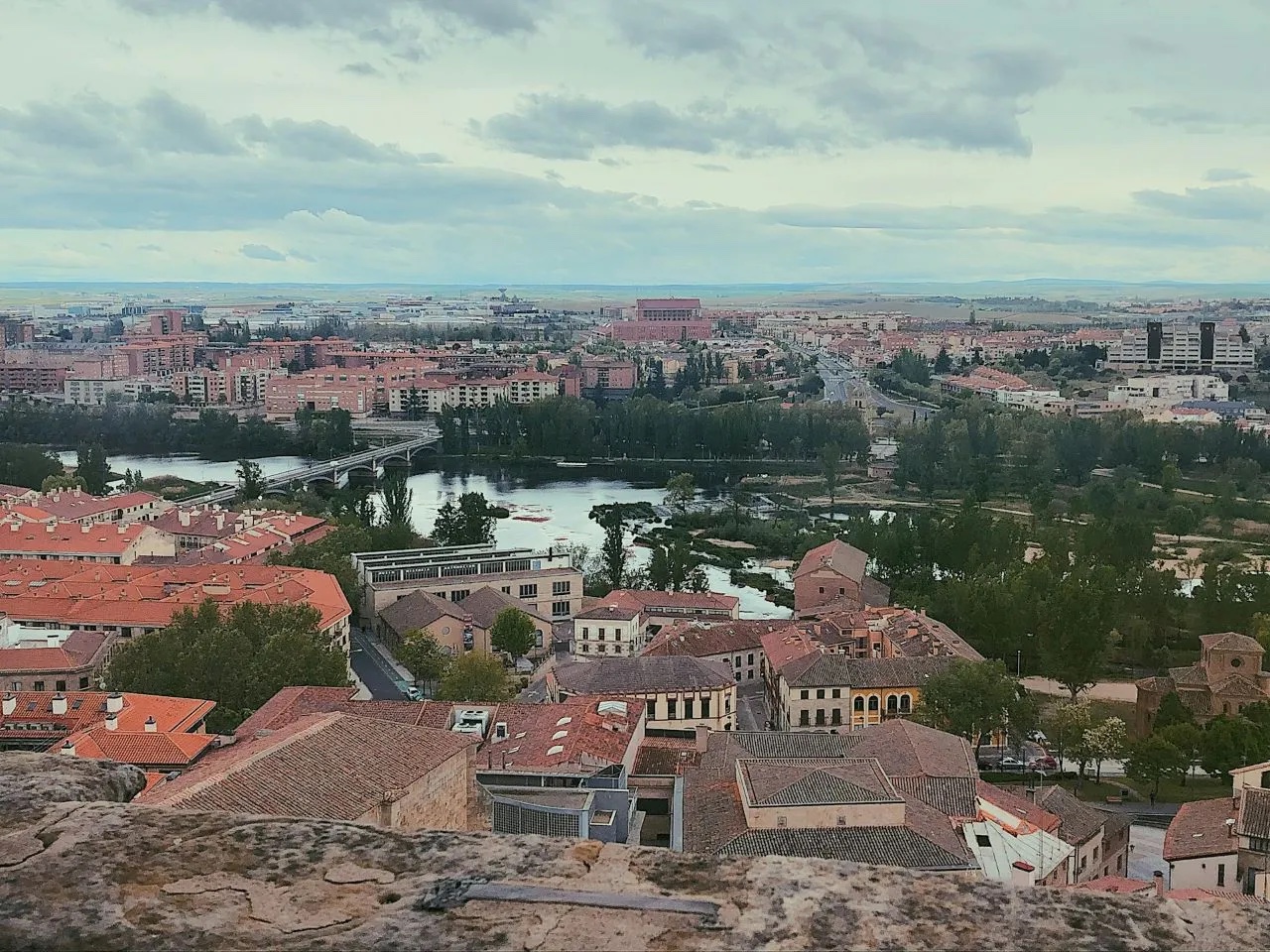
Revitalizing the city through nature
Urban Shift, which is supported by the Global Environment Facility and works with cities in the Global South, emphasizes an integrated approach to urban development, says Pool.
That means working with various city departments to implement nature-based solutions, he says, “with partners that have expertise on a number of different topics that are relevant for cities, to show cities how they can think about climate-resilient development in this integrated way.”
Barranquilla, Colombia, has seen the creation of nearly 1.5 million square meters of green space through the “Everyone to the Park” scheme spearheaded by the city’s mayor. Now, 93 percent of city residents live within an 8-minute walk of an urban green space.
The initiative has reduced crime rates, boosted local economies and helped establish food markets and outdoor fitness classes with more than 39,000 participants.
Freetown, Sierra Leone – the rainiest capital city in the world – offers another example of innovative urban reforestation ideas. After devastating mudslides claimed 1,141 lives in 2017, its mayor went to work on a campaign to plant 1 million trees, focusing on coastal, high-risk, and low-income areas of the city.
Now, over 500,000 trees have already been planted, but the key to the campaign’s success has been its pioneering financing mechanism.
Local communities take care of the seedlings by using an app to track tree survival. They receive cash tokens from funds donated by businesses and NGOs via mobile telephones. This model has enabled 80 percent of the total resources leveraged for the project to be injected into local communities.
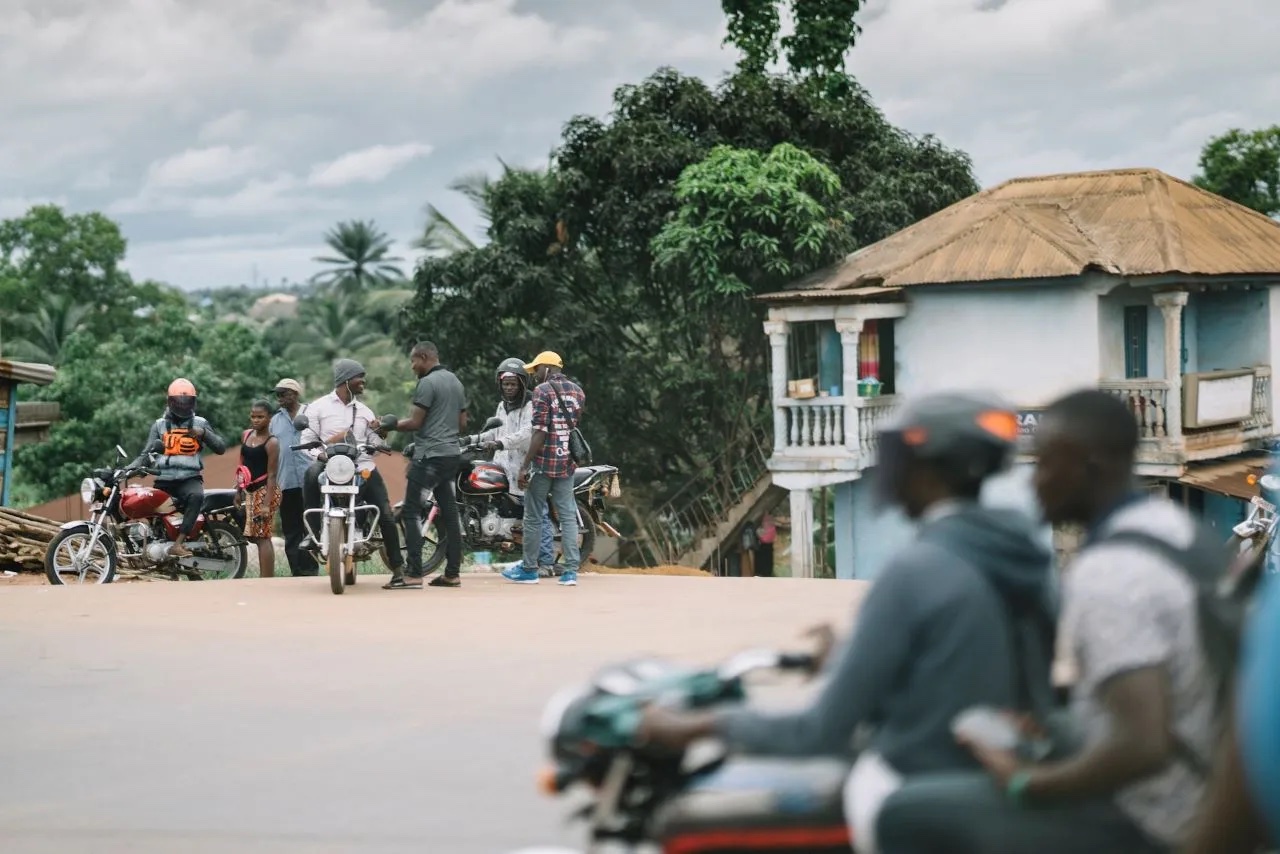
Building a network of green cities
Thanks to international and regional conferences like the recent 2nd World Forum on Urban Forests, city leaders and municipal decision makers have the opportunity to regularly exchange and learn about best practices.
The Tree Cities of the World program, says Borelli, has proven especially useful for small and medium cities, which “don’t have many ways to leverage the visibility of their work.” Tree Cities, he adds, have planted trees on three times as much land as the world average, proportionally speaking.
“There’s so much to research and to be inspired by in cities around the world,” says Pool. “One of the important things we need at the city level now is the transfer of that knowledge so that other cities can replicate what others have successfully done before them.”
READ MORE
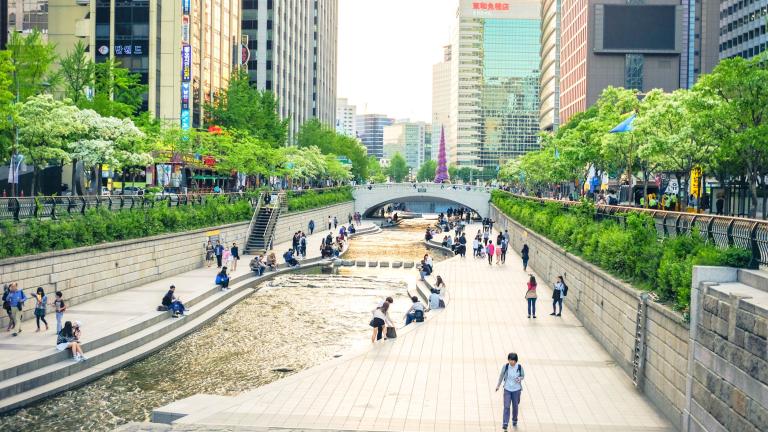
Nature-based solutions in cities are the future of the fight against climate change. Here's how to fund them.
Nature is the most resource-efficient solution to help build resilient, vibrant and future-proof cities, but implementing nature-based solutions needs funding. Here are five ways we can fund the green transition.
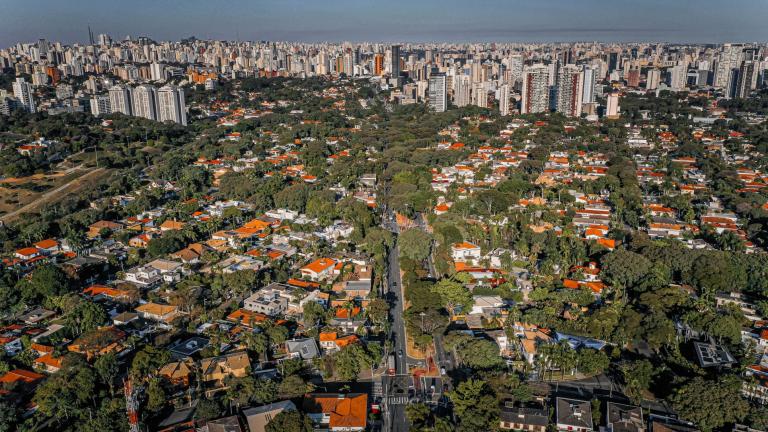
How Forests Near and Far Benefit People in Cities
A growing body of research shows that even forests located far away from urban centers provide tremendous benefits in regulating the global climate, water and biodiversity systems that are essential to people’s health and quality of life.
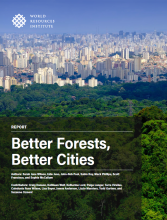
Better Forests, Better Cities
This report evaluates how forests both inside and outside city boundaries benefit cities and their residents, and what actions cities can take to conserve, restore and sustainably manage those forests.
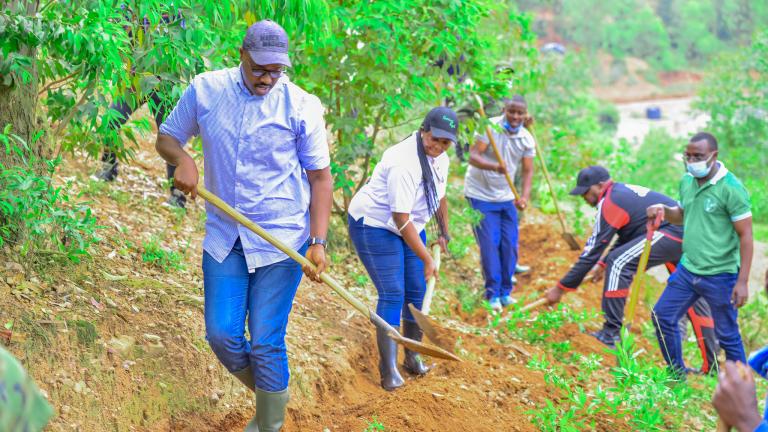
Kigali: On the path toward green, climate-resilient growth
Faced with a fast-growing urban population, the Rwandan capital is working to transform itself into a model green city. We spoke with Mayor Pudence Rubingisa about his sustainability goals and priorities for Kigali.
